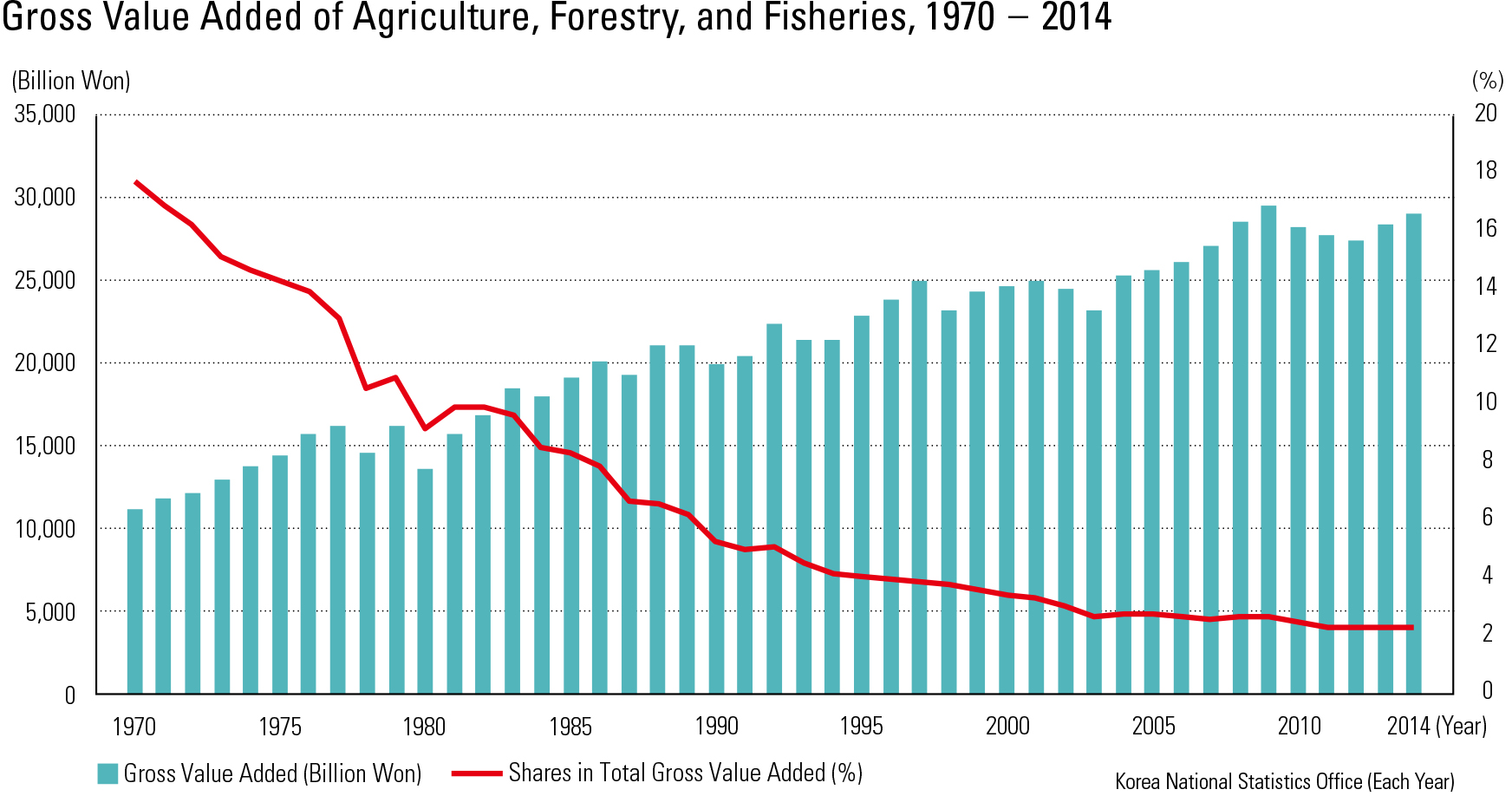English III
As the Korean economy has become more in- dustrialized, the primary industries (agriculture, forestry, and sheries) overall have gradually de- clined, and the share of the primary industries in the national economy has gone down drastically. The proportion of employment in agriculture, forestry, and sheries to the total employment was only 5.7% in 2014, fallen from just below 50% in the 1970s to less than 10% in 2000. These in- dustries’ share of gross value added to the Korean economy declined more dramatically than this. In 1970, the share of agriculture, forestry, and sher- ies to gross value added was 17.7%, then dropped to 5% by the early 1990s, and to below 3% by the early 2000s. It is a common phenomenon that all industrial- ized countries have experienced: as the economygrows, the primary industries’ proportion of totalnational production declines. Compared to otherdeveloped countries, it is particularly noticeablethat the primary industries’ proportion of totalnational production fell drastically in Korea. Forinstance, the time it took for the share of the totaleconomy occupied by agricultural production tobe reduced from 40% to 7% was only 26 yearsin Korea, compared to 100 years in Britain, theNetherlands, and Denmark; and over 90 years in the United States, Germany, and France. Even in Japan, it took close to 73 years. It took only 14 years for the proportion of agricultural employ- ment in Korea to decline from 40% to 7%, com- pared to at least 40 years in the United Kingdom, the Netherlands, Denmark, the USA, Germany, and France, and 31 years in Japan. The decline and structural changes in the pri- mary industries did not occur uniformly across regions in Korea. Most rural areas did not have enough local jobs to absorb the surplus agricul- tural labor force. Therefore, there was mass out- migration to the cities while in-migration to rural areas was negligible. As a result, there are still some areas that maintain a high proportion of em- ployment in the primary industries. On the other hand, in 2010, for the proportion of employment in the primary industry for all 230 cities, counties, and boroughs (-si, -gun, and -gu), over 58 places have less than 1% of employees working in pri- mary industries, while 71 places have more than one-third of their employees working in primary industries. Thirty-four places (-si, -gun, and -gu) had more than half of their employees engaged in primary industries, but most of these are in the remote rural areas of Gyeongsangnam-do, Gyeo- ngsangbuk-do, Jeollanam-do, and Jeollabuk-do.
page_2 |

